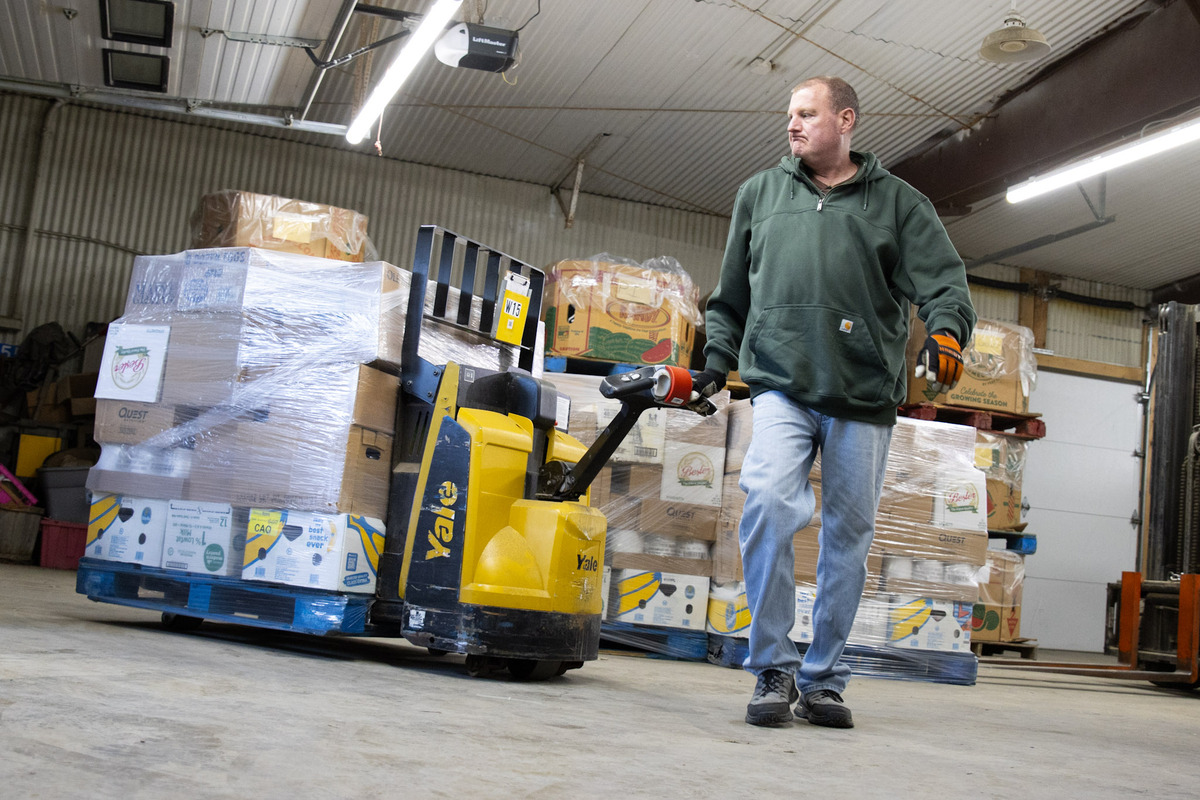Food pantries in Maine are bracing for a significant increase in demand as the federal government shutdown threatens funding for the Supplemental Nutrition Assistance Program (SNAP). With more than 170,000 Mainers at risk of losing their benefits in November, local organizations are ramping up efforts to meet the anticipated need.
At the Catholic Charities Food Bank in Monticello, Jon Blanchard, the director of hunger and relief services, unloads pallets of food at a rapid pace. Items such as rice, tomatoes, and cereal are being organized to support the two dozen food pantries throughout Aroostook County and the northern regions of Penobscot and Washington counties. The food bank distributes between 110,000 and 145,000 pounds of food monthly. However, the looming lapse in SNAP funding has raised concerns about whether this will be sufficient.
As the government shutdown extends into its 27th day, the impact on rural areas like Aroostook County is expected to be particularly severe. SNAP enrollment in this region exceeds the state average, potentially increasing reliance on food pantries. Blanchard emphasized the challenge, stating, “There isn’t a program that can replace that. But we’re best suited to do the most good and hit as much need as possible.”
Food pantries across the state have already felt the repercussions of earlier funding cuts. The U.S. Department of Agriculture (USDA) reduced funding by approximately $500 million from The Emergency Food Assistance Program (TEFAP) this year. Additionally, the previous administration’s decision to eliminate the Local Food Purchase Assistance Cooperative Agreement Program has further strained resources.
Volunteers at local pantries are noticing the effects firsthand. Rena Kearney, who assists at the Mars Hill Community Cupboard, noted a drastic reduction in supplies. “Before we were getting maybe four or five cases of something, and now we’re getting only maybe one case,” she explained, highlighting the challenges faced by those serving approximately 14 families each week.
At the Grace Interfaith Food Table in Presque Isle, volunteer Marcia Cogswell reported that the pantry has seen a decline of “40 to 50% less” food available compared to a year ago. With people increasingly concerned about losing their SNAP benefits, she has been inundated with calls from individuals seeking assistance. “They’re worried about next month,” Cogswell said. “They just want to be on the schedule, just in case.”
In response to the impending crisis, Catholic Charities has initiated several strategies to bolster food supplies. The organization is allowing pantries to collect their monthly food allotments early to better assess available stock. “The first thing I said to pantries is, ‘Hey, nobody really knows what’s coming,’” Blanchard recounted. This proactive measure aims to prepare them for the potential surge in demand.
Additionally, Catholic Charities is engaging local producers to explore options for increasing food purchases in November. Blanchard reported receiving positive feedback from these discussions and encouraged community members to consider financial donations to support the effort.
To maximize available resources, the organization is also urging food pantries to extend their hours of operation, contingent on volunteer availability. Many smaller locations in Aroostook County currently operate only a few days each month. “We recognize that some communities are smaller than others, and almost all of them are run 100% on volunteer hours,” Blanchard said, emphasizing the importance of flexibility in responding to the crisis.
Despite these measures, the outlook remains uncertain. Blanchard acknowledged the difficulties ahead, stating, “Will we be able to provide enough food to meet the full need if SNAP funding lapses? Unlikely. But we are as prepared as any place could be.”
Food insecurity in Maine has been on the rise, with 13.8% of the population experiencing food insecurity in 2023, an increase from 10.4% in 2020, according to data from Feeding America. Alarmingly, the state reported the highest percentage of food-insecure children in New England, with 20.6% facing this issue in 2023. Approximately 13% of Maine residents and 20% of those in Aroostook County rely on SNAP benefits.
As the government shutdown continues, community leaders like Blanchard express deep concern for those facing hunger. “I’m worried about individuals who are hungry,” he said. “If this were to happen, then you have hungry neighbors and friends. My job is to feed people, and I’m going to do the best I can, but I’m also not naive, and I know that there are limited resources.”
Cogswell remains hopeful about her pantry’s ability to meet demand. “We have always met the demand,” she stated, though she recognizes the limitations imposed by circumstances beyond their control. “We will do our best. We can only give what we have.”
With the future of SNAP benefits uncertain, food pantries throughout Maine are facing unprecedented challenges as they strive to support their communities during this critical time.
